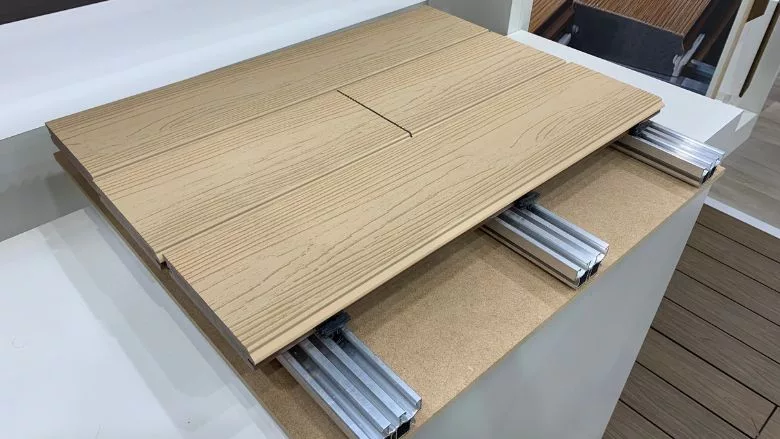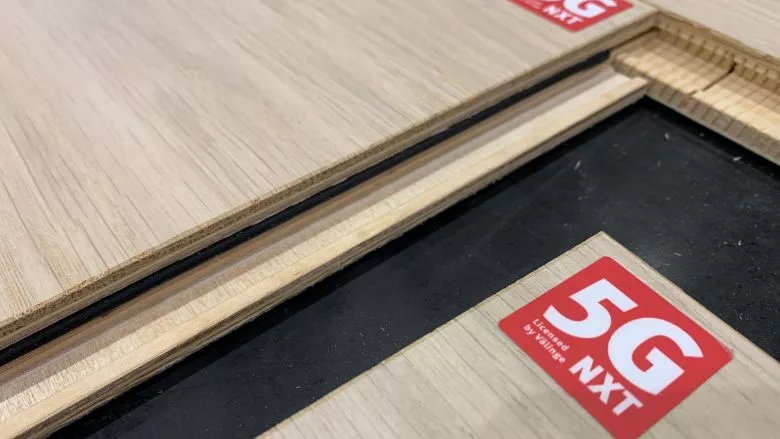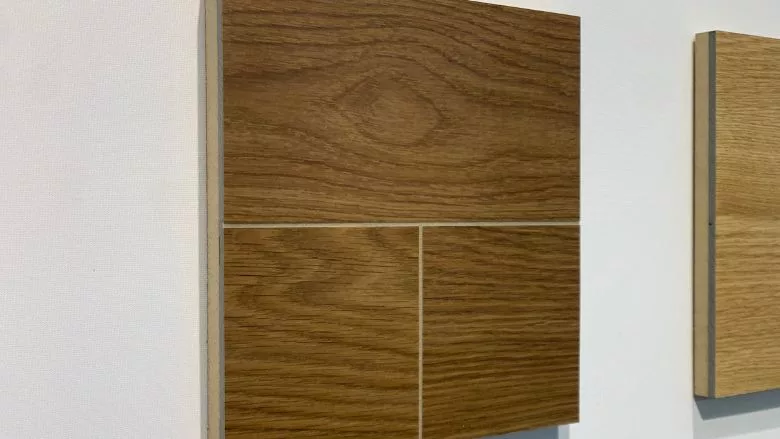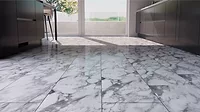Domotex 2024 Takes Sustainability and Flooring Technology to the Next Level

Domotex Hannover 2024 welcomed attendees from all over the globe. Photo: FLOOR Trends & Installation.

The Green Collection Awards chose 10 winners from among 70 global entries. Photo: FLOOR Trends & Installation.

Amorim Cork Composites showcased its Go4Cork underlayment. Photo: FLOOR Trends & Installation.

CFL Flooring's Eco-Composite flooring is a 100% recyclable flooring product. Photo: FLOOR Trends & Installation.

I4F's new Click Deck system makes installing, removing and reusing decking simple. Photo: FLOOR Trends & Installation.

Välinge's 5G NXT is designed to allow the removal of one board at a time. Photo: FLOOR Trends & Installation.

Tuftco's True 3D capabilities are endless. Photo: FLOOR Trends & Installation.

Unilin FlinTile creates a waterproof surface through the use of epoxy-based grout with floating SPC installations. Photo: FLOOR Trends & Installation.
Exhibitors at this year’s edition of Domotex in Hannover, Germany, showcased a variety of innovations in manufacturing, sustainability and installation.
Innovations in Sustainability
Many exhibitors took on the issue of global issue of waste recovery and reuse, or upcycling, by incorporating components from various other industries such as the fashion and energy industries into their flooring products. Hybrid flooring products were prevalent with some innovative options that are truly 100% recyclable. When it comes to installation or removal of flooring, click-system technology manufacturers showcased faster and simpler options. And carpet manufacturers now have an option for tufting technology that will literally do it all.
Domotex held The Green Collection Awards for a second year in which winners showcased flooring products that made use of a variety of natural and sustainable raw materials. The use of cork in the production of flooring products was certainly more noticeable this year.
Lico AG, a Swiss flooring producer, took home the win for its Lico Denim floor product that combines denim as the top layer with a wood-based core and a cork backing. Its goal is to reduce the amount of textile waste entering landfills as a result of quickly evolving fashion trends and a throw-away mindset.
Amorim Deutschland GmbH, part of the Amorim Group, was awarded for “the company's continuous efforts of using cork – and other renewable resources – in flooring.” Recently, the company purchased nearly 20,000 acres in Portugal where it plans to plant a cork tree forest that will grow to maturity in 25 years, according to Rick Loomis, director—sales flooring North America, Amorim Cork Composites.
While Amorim Deutschland GmbH showcased its cork flooring, Amorim Cork Composites came to market with its Go4Cork underlayment made from cork blended with the PET foam from recycled wind turbine blades. It is a vapor barrier and acoustic insulation.
According to Loomis, sourcing pure cork has become expensive. By blending cork with other materials, manufacturers are able to produce less expensive cork hybrid options. It also keeps the other materials out of the landfill. Additionally, he points out that the pressing process has improved from a four-step process to a two-step process, resulting in an overall cost savings that translates to a more affordable product.
The Green Collection Award winner, CFL Flooring, entered its Tenacity Eco-Composite Flooring as an alternative to other oil-based rigid core products. Labeled FirmFit Eco-Composite in the U.S., this 100% recyclable, PVC-free product is constructed using a wood-based core that is combined with minerals in a high-density construction, allowing for a thinner, stronger product, according to Thomas Baert, president, CFL Flooring.
“The good thing about this product is it can be recycled together with wood,” said Baert.
The Eco-Composite line is made with a cork backing, creating a product that requires no deconstructing prior to the recycling process. The entire floor can be recycled with wood.
“It’s the only product that can be recycled immediately, not in 20 years’ time,” said Baert. “Today, you can recycle it. In 20 years’ time, you can recycle it. You don’t need to study what’s in it because it can go with wood.”
I4F partnered with HMTX to bring to market another circular product—HMTX SRP TPU flooring technology, which transforms waste plastic bottles into circular flooring. First introduced at NeoCon 2023 (read the story here) by HMTX under the Mycelium Collection, SRP TPU flooring technology transforms waste plastic bottles into circular flooring. Two plastic bottles (PET) are upcycled into each square foot of SRP flooring, which is constructed with a PET top layer, thermoplastic polyurethane (TPU) core layer, and a cross-linked polyurethane foam back layer. SRP flooring can be ground up and transformed into an engineered TPU giving the manufacturer the ability to recycle each plank into new planks, making it a circular product.
Innovations in Installation
Just prior to Domotex, i4F announced another innovation: click decking. Aluminum rails are used to install the decking using plastic clips connect the planks to the rails, allowing for easy installation and removal of each plank. The ClikDek system can be utilized for permanent decking or temporary decking solutions and plank replacements.
“The beauty of it is there is a sustainable aspect to it because you do not have to throw away this decking,” said Ellen Klerkz, senior marketing and communications specialist, i4F. “You can take out board after board—they are not damaged, and you can install it in a different place.”
Välinge showcased two floor-locking systems. 5G NXT uses a more durable insert that allows for the removal of individual planks as opposed to removing an entire row. Simply tap the planks, remove and reinstall elsewhere if desired. 2G Pro is an improved version of Välinge’s original 2G angling installation system used on resilient flooring down to 3mm. The new version offers even greater vertical locking strength and durability and can be combined with the company’s 5G technology.
Unilin showcased the FlinTile SPC groutable locking system which uses ceramic-look SPC products in a floating installation that requires a specially formulated epoxy-based grout to create the water-resistant surface. The grout penetrates a 2mm deep gap from the surface of the floor to the top of the click system. Installation requires three steps: click, grout, clean, and is ready for foot traffic in less than a day. Read more here.
Innovations in Carpet Tufting
Tuftco’s new True 3D technology offers more versatility in carpet tufting, according to Mark Harman, vice president of global sales, Tuftco. True 3D creates cut pile starting with 5/32 gauge, and with the push of a button, it can switch to 8th gauge, 10th gauge or 12th gauge. It can tuft conventional LCL products with a variety of gauge options.
“We can also vary the levels of cut pile within the product and the gauge within the same product,” Harman said. “A designer has true, complete design flexibility. For instance, you could say, ‘I want this area to be color A, this area to be color B, but on top of that, I want color B to be a certain pile height, color A to be a different pile height, and I want the density of this area to be 14th gauge and the density of this area to be 8th gauge.’”
Looking for a reprint of this article?
From high-res PDFs to custom plaques, order your copy today!



